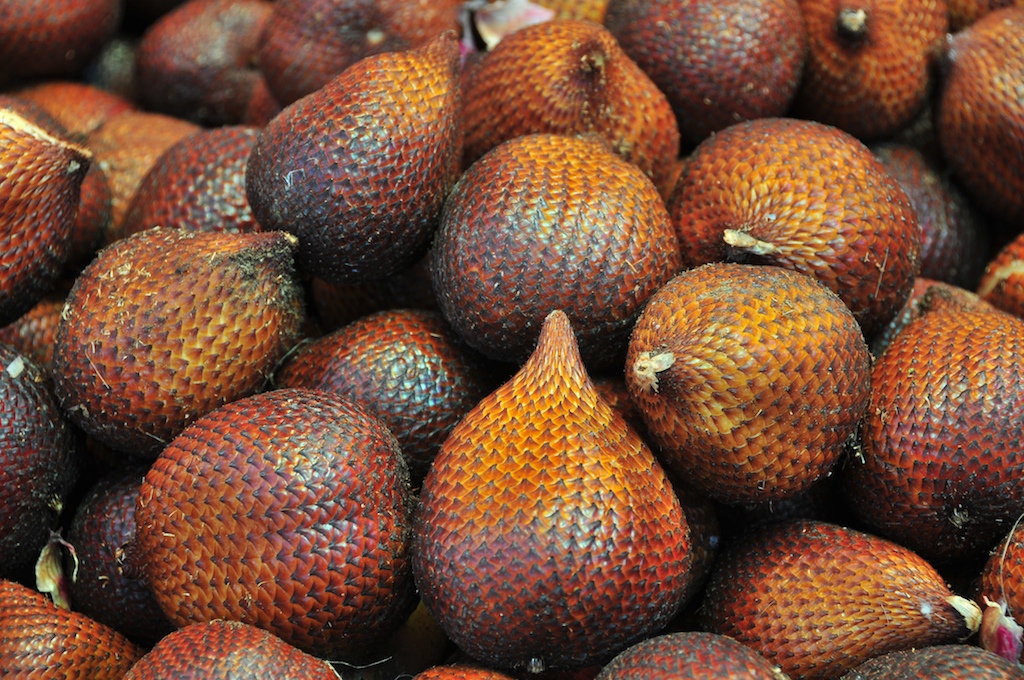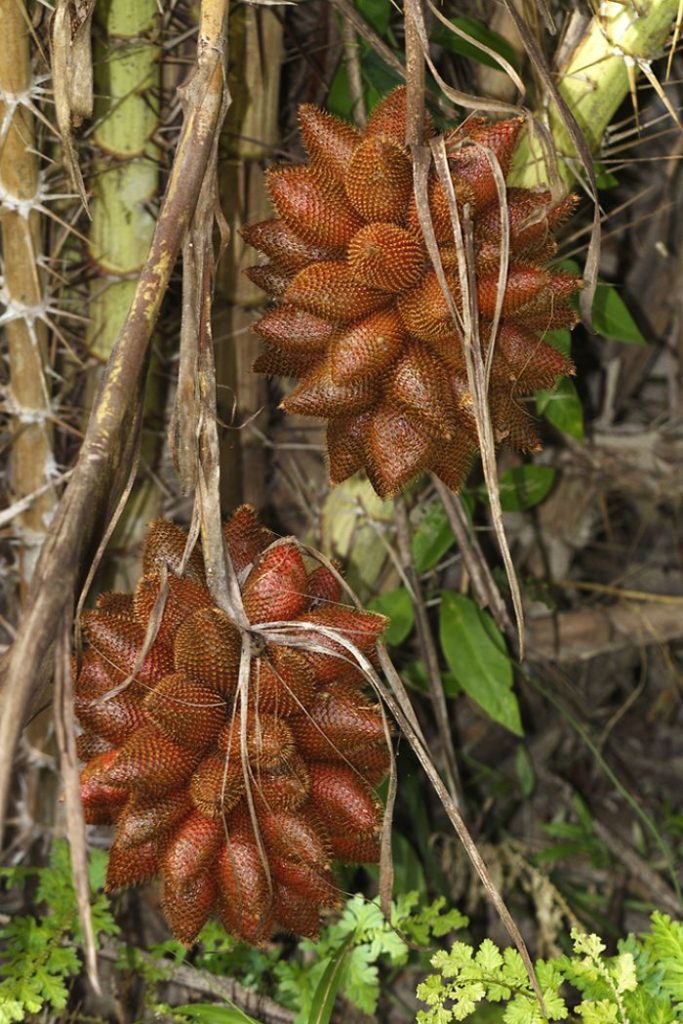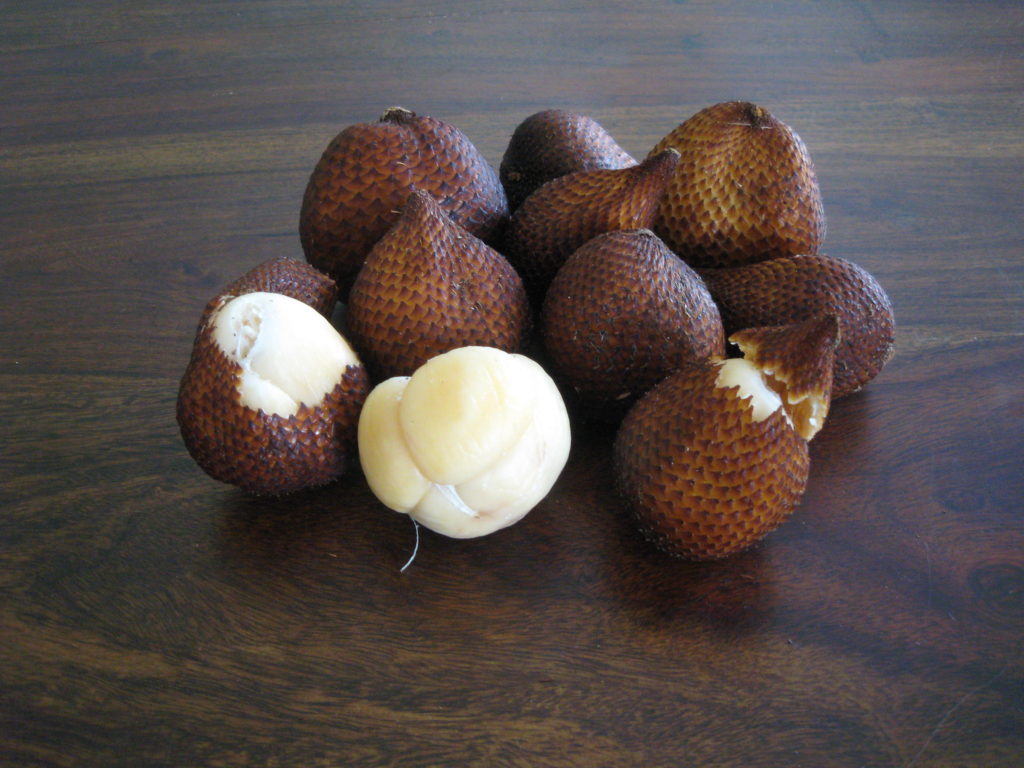Exotic Food Finds: Snake Fruit (Salak)

Salak- An Indonesian fruit you’ve never heard of
Salak also known as “salacca zalacca” or snake fruit, is native to Indonesia with over 30 varieties. Two varieties of salak are most prominent in the islands of Bali and Java. The salak pondoh or Javanese variety, is far more aromatic of the two. Bali’s salak bali has an apple-like crunchy texture, with hints of a pineapple flavor and the tartness of lemon. It is also found around southeast Asia, where the fruit is mostly cultivated as a cash crop.
Snake fruit belongs to the palm tree species (Arecaceae family), growing in clusters, similar to coconuts; but can be found on the base of the tree. Both the stems and leaves of the palm are surrounded by prickly thorns.
(See also, açaí berry palm clusters).

The skin of the fruit has a remarkable resemblance to that of a cobra or python snake. It’s shape and size mimics figs with red, yellow, and brown pigments. Its fleshy insides can be eaten by pinching the tip and peeling the skin backwards. There are three large inedible seeds on the inside, surrounded by an off-whitish colored pulp.
It is said the eating excessive amounts of the fruit can induce constipation, as a result of its Tannin properties; an anti-diarrhea compound. It is rich in beta-carotene, polyphenol compound, thiamine, vitamin A, B, and C, potassium, and pectin. There are many benefits from eating salacca. Above all, it keeps you healthy.

In Indonesia, the fruit is sold at various local markets just as much as apples or oranges in American supermarkets. Although locals prefer to eat them straight out of the tree, they can be transformed into other favorites such as jams, pickles, and chips.